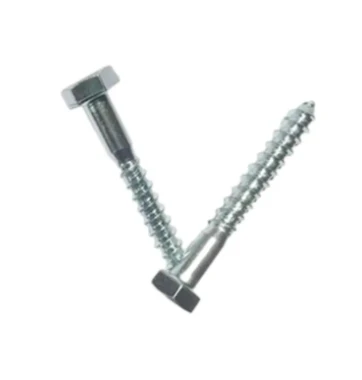Dez . 11, 2024 11:38 Back to list
how to use a sleeve anchor
How to Use a Sleeve Anchor A Comprehensive Guide
Sleeve anchors are one of the most versatile and reliable fasteners used in construction and mechanical applications. They provide a strong bond to concrete and masonry, making them ideal for hanging fixtures, mounting equipment, or securing railings. Understanding how to properly use sleeve anchors is crucial for ensuring stability and safety in your projects. This article will provide a step-by-step guide on how to effectively use sleeve anchors.
What is a Sleeve Anchor?
A sleeve anchor consists of a bolt and a sleeve, which expands when the bolt is tightened. The sleeve is usually made of metal and is designed to grip the inside of a pre-drilled hole in concrete or masonry. As the bolt is driven in, the sleeve expands against the sides of the hole, providing a secure hold.
Tools and Materials Needed
Before starting your project, gather the necessary tools and materials
1. Sleeve anchors (choose the appropriate size and weight capacity based on your needs) 2. Hammer drill with a masonry bit (to drill into concrete) 3. Torque wrench or wrench set (for tightening) 4. Clean cloth (to remove debris) 5. Vacuum or blower (optional, for cleaning the hole) 6. Safety goggles and gloves (for protection)
Step-by-Step Instructions
1. Choose the Right Sleeve Anchor Determine the weight and load requirements for your project. Sleeve anchors come in various sizes and lengths. Make sure to select one that can handle the load you intend to place on it.
2. Drill the Hole - Using a hammer drill and a masonry bit, drill a hole into the concrete or masonry wall. The diameter of the hole should be equal to the diameter of the sleeve anchor. - The depth of the hole should be slightly deeper than the length of the sleeve anchor to ensure full expansion.
how to use a sleeve anchor

3. Clean the Hole - Remove any dust or debris from the hole using a vacuum or blower. It's essential that the hole is clean for the sleeve anchor to achieve maximum holding strength.
4. Insert the Sleeve Anchor - Place the sleeve anchor into the hole, ensuring that it's positioned straight and flush against the surface. The circular flange should be resting on the surface of the material.
5. Tighten the Anchor - Using a wrench, turn the nut on the sleeve anchor clockwise. As you tighten it, the sleeve will expand inside the hole. Continue tightening until you reach the manufacturer’s recommended torque specification, which is often provided on the packaging or product details. Be careful not to overtighten, as this can damage the anchor or the surrounding material.
6. Check for Stability - Once tight, check the anchor to ensure it is secure. Give it a gentle tug; if it does not move, you have successfully installed the sleeve anchor.
7. Finish Your Project - With the sleeve anchor securely in place, you can proceed to attach whatever fixture or equipment you were planning to mount. Follow any additional installation instructions provided for your specific application.
Safety Considerations
While using sleeve anchors is straightforward, it’s important to take safety precautions. Always wear safety goggles to protect your eyes from dust and debris when drilling. Gloves may also be helpful to prevent injuries from sharp materials or tools.
Conclusion
Sleeve anchors are a practical solution for securely fastening objects to concrete and masonry. By following these simple steps, you can ensure a strong hold for your projects, enhancing both safety and stability. With the right tools and a methodical approach, using sleeve anchors can be a hassle-free task for both professionals and DIY enthusiasts alike.


